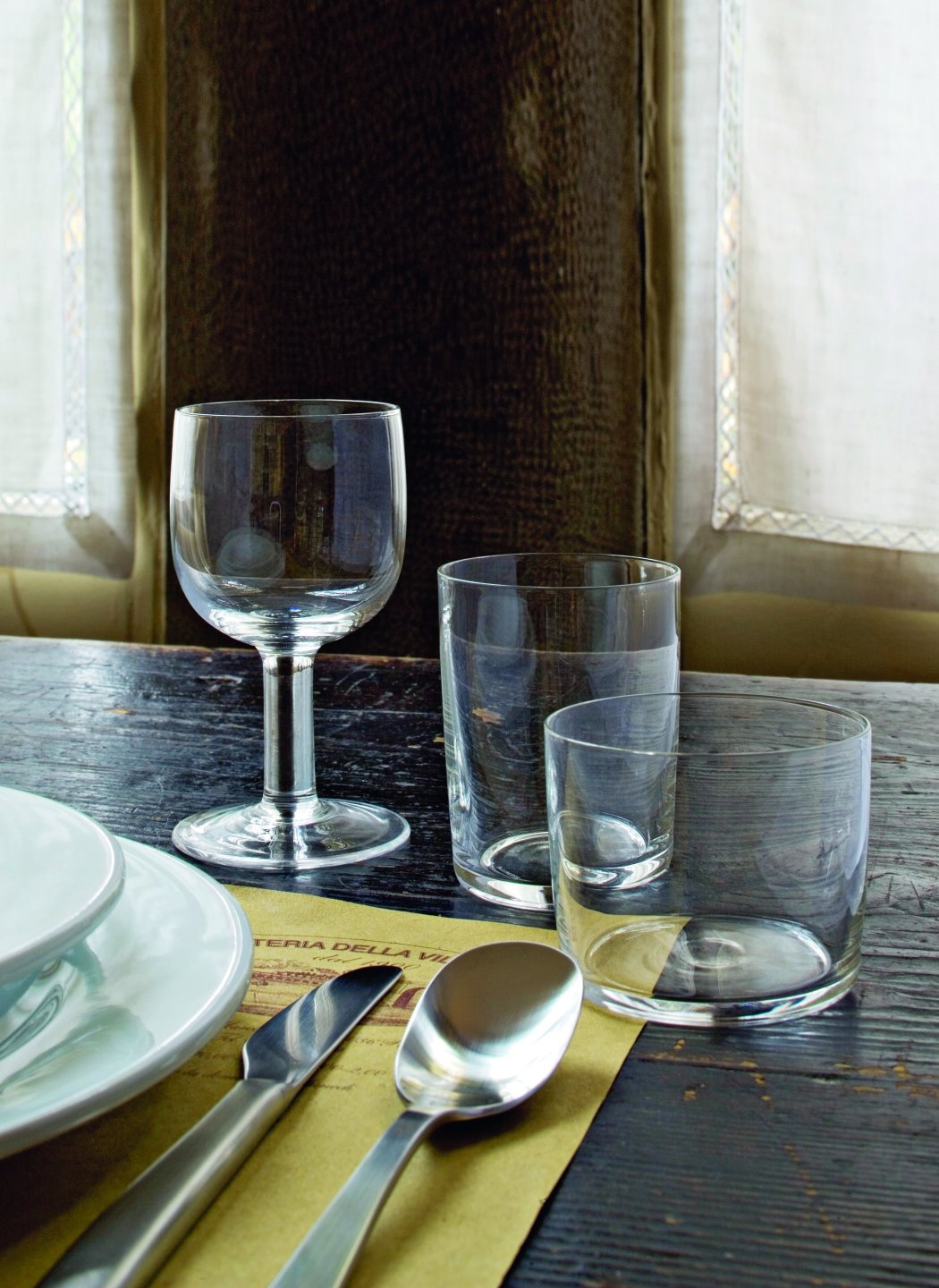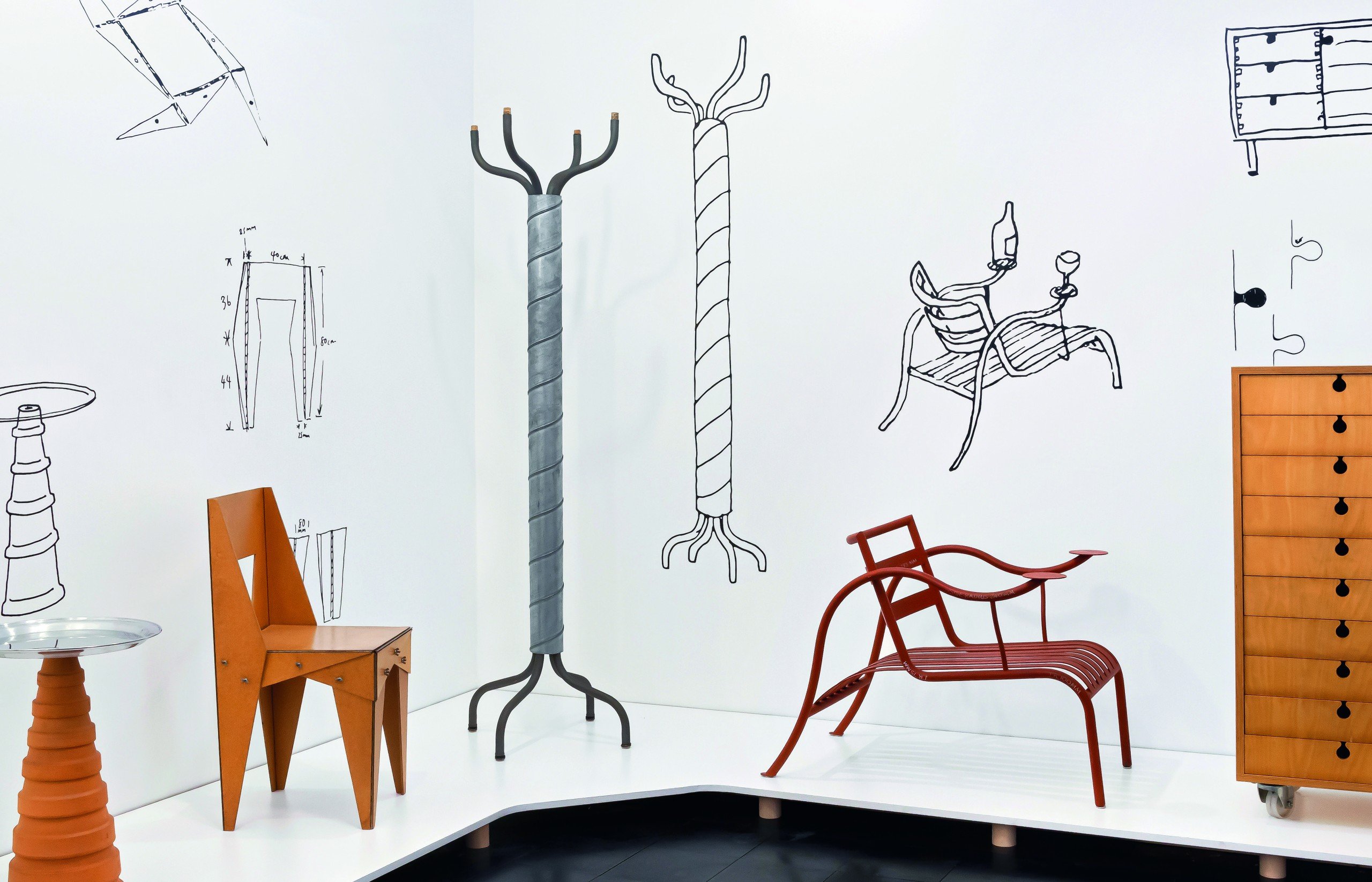
To many design enthusiasts and experts alike, there is a seductive simplicity to the world of Jasper Morrison. His work as a designer—which encompasses objects from forks to washing machines, but is mostly renowned for chairs—is propelled by a search for basic forms for everyday objects: the “unpretentious,” as he describes some wineglasses found at an antiques shop in Paris in the opening pages of A Book of Things, the monograph first released by Lars Müller in 2015 and republished as an updated, expanded edition this past spring.
That Parisian glass would inspire a sketch and, later, a whole family of glasses for the Italian brand Alessi. This journey—from found object to designer product—becomes a familiar one throughout the book, demonstrating the importance of observation to Morrison’s design process while also treading the line between appreciation and appropriation in a way that is never truly acknowledged or discussed and, as a result, seems a little shallow.
As an overview of Morrison’s impressive career, though, the book is undoubtedly useful. It is an extensive sweep that includes early projects, such as the Thinking Man’s Chair (1985), and running up to a dining chair for Magis presented at Salone del Mobile earlier this year. It has a loose chronological flow, but groups of designs—where a stool becomes a dining chair, a dining chair becomes an armchair—are clustered, such that the threads and frequent clients are easy to follow alongside the breadth of his work.
Each piece is explored with full-page photography and short descriptions, written by Morrison himself, consisting of personal observations and anecdotes. The tone is straightforward and honest, revealing stories about inspiration, process, or the relative success of the clock, kettle, or stool that is being discussed. They are often charming stories characterized by a casual wryness. Take his account of the Universal System shelving units, designed for Cappellini in 1990: “I’ve never been very organized and when I discovered how the Mac helped me order my paperwork, I thought I’d try to do the same thing for objects.”
This tone matches the Jasper Morrison approach to design. His objects tend to be transparent in their construction, honest in their materiality, and unfussily functional: the Air series chairs for Magis (1999–2005) are made from a single plastic tube; the Moca café chair for Vitra (2020) consists of a metal tube structure and a plywood seat; wall clocks for Muji and Hay (2007, 2023) look like … wall clocks.
Repeated throughout the book, Morrison’s work begins to take on a form of a manufactured manifesto; a lifelong attempt for the ur clock, kettle, or stool. Sometimes this boils over into explicit declarations of design’s purpose or aim. Writing about his Glo-ball lamp for Flos (1998), Morrison celebrates “an object’s ability to transform the atmosphere of surroundings in an unusually powerful and pleasing way, while managing not to exclude or overpower the other objects in the room.” He finishes the book with a quote from the Soviet journalist and novelist Vasily Grossman, which encapsulates the ethos he believes all designers should aspire to: “Perfection is always simple and it is always natural.”
This didactic approach to design thinking feels somewhat outdated. In the 10 years since the book was first published, design discourse has expanded—albeit gradually—into a more pluralist and contextually sensitive discipline. The heroic aura around Modernist minimalism in design has been complicated, attempting to account for the unseen labour and extractive material practices that are required to produce lifestyles of luxurious simplicity. So while A Book of Things is indeed filled with beautiful things, there is scant discussion of how those things are entangled in broader social and material systems.
This analysis is, of course, not a requirement for a designer’s monograph, but Morrison actively brings pseudo-sociological observations of the world into his understanding of his own practice. Other Morrison books are concerned with ordinary objects, either photographed on his travels (The Good Life, from 2014) or collected in an ethnographic museum in Lisbon (The Hard Life, from 2017). A Book of Things, meanwhile, is peppered with anecdotes of noticing “anonymous” designs on his travels: a “beautiful table” at a Viennese café; the stacking chairs “everywhere outside cafés” in Portugal; the industrial lights at London restaurant St John. These are invariably converted into napkin sketches, their formal elements extracted and turned into expensive products.
Through this observational work, Morrison seems to be on a search for a rule of design for the “everyday” that can be applied regardless of cultural specificity. Indeed Super Normal, an ongoing project undertaken by Morrison with Muji designer Naoto Fukasawa across books and galleries since 2006, purports to gather objects which are recognizable “as the most normal example of a particular type of object”—a Bic lighter, a Bialetti espresso maker—the “end game in an object’s typology.”
However, rather than revealing a sort of universal design truth, Super Normal is better understood as the result of curatorial acts and decisions from specific designers who happen to enjoy minimally designed things. It’s a visually satisfying assemblage but—as with Morrison’s own “anonymous” influences—it is also culturally flattening.

Choosing to republish A Book of Things (which, in an enjoyable meta-moment, is actually featured as a Jasper Morrison project within the book itself) after a decade might seem like an opportunity to reappraise or historicize the previous version. It might provide a chance to reflect on how the design industry or our relationship with everyday objects has changed, between 2015 to 2025, in the context of the climate crisis or the digitization of everyday life.
But the new edition of the book gives little away as to why this might be a good time to reconsider the work of Jasper Morrison and rather seems to simply add more projects—or, crucially, more products. One wonders if the close entanglement among Morrison, the furniture designer, and the commercial interests of his clients limit the possibilities—or simply the willingness—to critically reflect on the past or present consequences of the industry.
Thus the republished book seems like a missed opportunity to gain new perspectives from a designer who has seen so much of the industry throughout a 40-year career. There are, however, hints of what this insight could look like in two recent projects. In Morrison’s description of a tableware set he designed for the Finnish company Iittala, in 2018, he describes the company’s acquisition by the Fiskars Group and the impact this had on Iittala’s output. He decries the “questionable material quality” of the company’s ceramic suppliers and the “intense pressure such historic brands are under to compete with cheaper alternatives.”
The changing economics and ecology of materials seems a vitally interesting topic for Morrison to take on in further detail. Similarly the EVO-C chair, a 2020 two-legged, cantilever chair for Vitra, is molded in plastic and in the book is accompanied by a brief discussion of the chair’s sustainability report. Morrison explains that, “Compared with single-use packaging of food and products, compared with clothing, the production of furniture that lasts is a considerably better use for plastics.”
In both cases, and indeed across the book, there is more to say. Simplicity can be a virtue, but complexity doesn’t have to be a fault. Morrison’s commitment to the “unpretentious” seems to get in the way of drawing out the pressing themes that were perhaps already on the tip of his tongue.
Jasper Morrison’s A Book of Things will be the focus of the June 30 gathering of the New York Architecture + Design Book Club, a quarterly book subscription and event series organized by Untapped and the Brooklyn bookshop Head Hi. The program will feature Jonathan Olivares, SVP of design at Knoll, in conversation with Nick Olney, president of Kasmin gallery—which gave Morrison his first solo gallery exhibition in North America, in 2019, and whose late founder, Paul Kasmin, was a close and longtime friend of Morrison’s. Find out more and RSVP on the book club’s website.